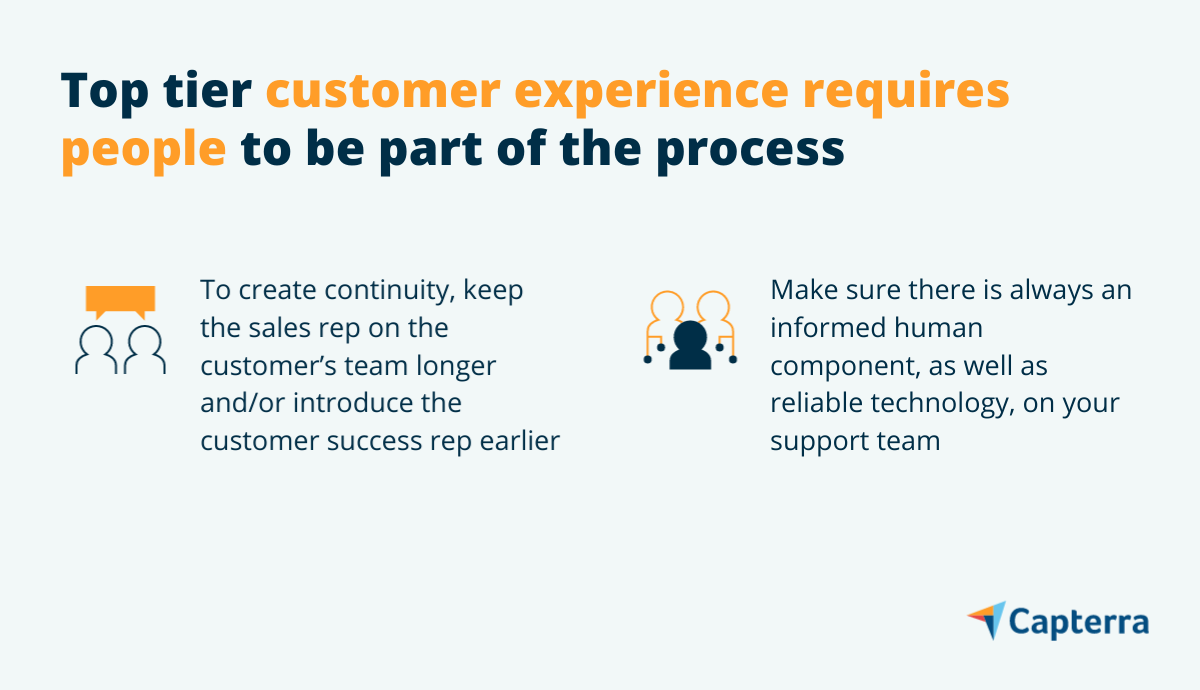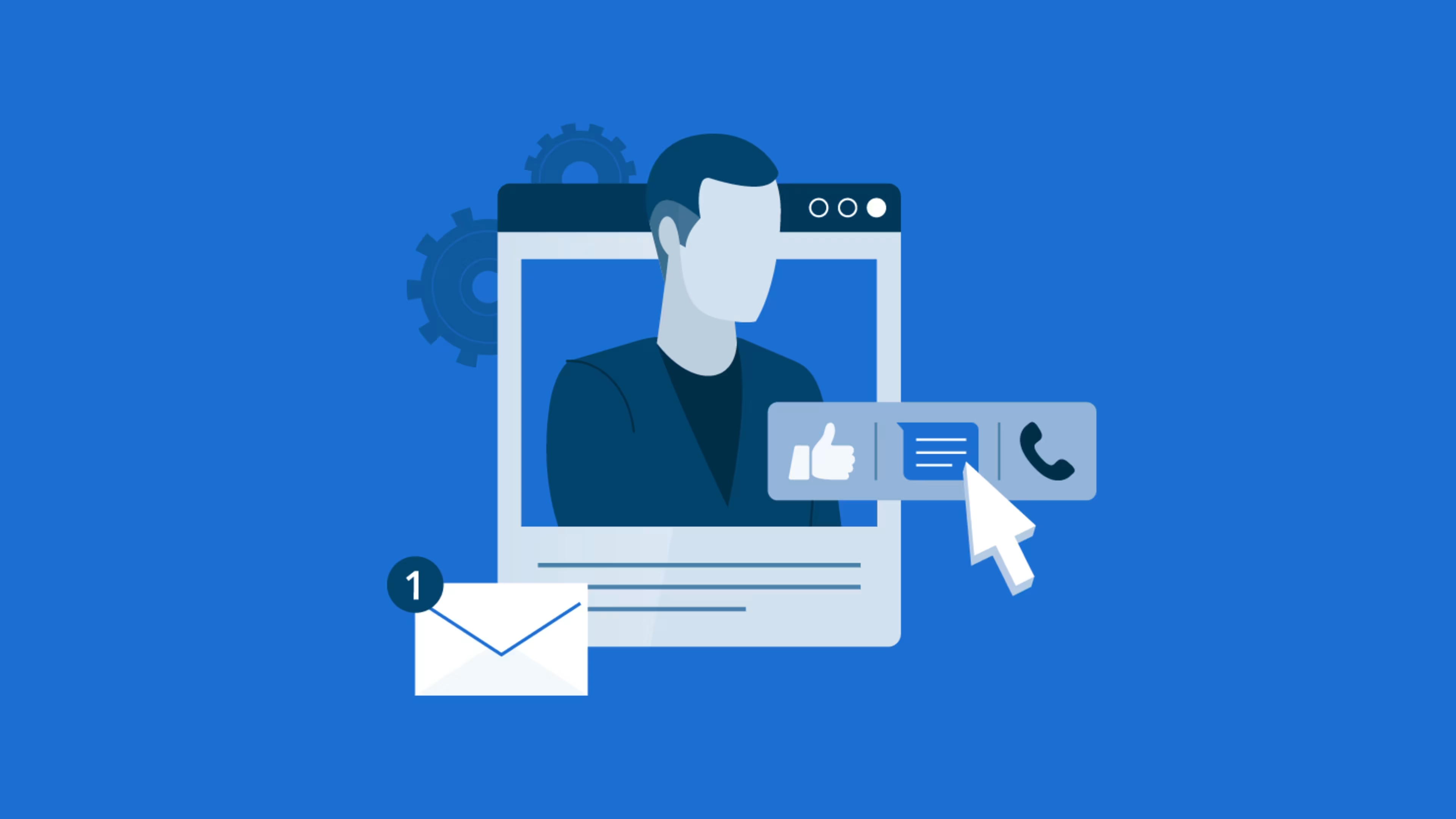CX expert Dan Gingiss shares the secret to customer retention and growth through customer service experiences.
/ An interview with Dan Gingiss
The following summarizes an interview facilitated by Capterra team member Kyle Rich and CX expert Dan Gingiss. This conversation was edited for length and clarity.
Never underestimate customer loyalty. Certainly, there are those customers who are so demanding or challenging that the cost of keeping them outweighs what they put into the company coffers, but those are rare.
“If a customer continues to spend the same amount of money and never jumps from your gold package to your platinum package—but just stays there and is consistent and predictable—that is important,” stresses customer experience expert Dan Gingiss, an international keynote speaker, coach, author, and podcast host.
“Especially with new businesses that are looking for investors—investors want predictability, and those loyal customers give you a huge advantage.”
Even for an established company, over the long run you want that predictable base of customers, along with others you can develop further. You need to keep both types happy.
“Whether it’s a lower- or medium-end customer or a big one, you want consistency,” Gingiss notes. “It’s a lot less costly to retain customers than [it is] to go out and find brand new ones all the time.”


Dan Gingiss
Customer service experience expert
The key to business stability and growth is keeping your valued customers, then finding new ones.
How do you keep those customers long-term? According to Gingiss, a lot of it has to do with capturing their attention with an extraordinary customer experience from the start and continuing that attention and energy as much as possible throughout the relationship.
People and technology play key roles in doing that.
Create a lasting connection
Part of the process of providing an extraordinary customer experience is in the initial approach and presentation—that wow factor.
“One of the best ways that we can improve our marketing and improve our sales is by creating remarkable experiences so that our customers are talking about us.” Gingiss says.
“You want customers to tell their colleagues and peers, ‘You wouldn’t believe what Company ABC did for us.’ Because when we have magnificent experiences, we want to tell everyone.
“Just look at your Instagram feed, for example: That's what our natural tendency today is—to tell stories of great things that happen to us. That happens in the B2B world as well, and you become immensely more referable when you're providing great experiences that your customers can talk about.”
But it’s more than just a big show at the beginning of the process. As Gingiss points out, a lot of money and time can be spent acquiring a new customer, but is the process to get them up to speed with your product and offer long-term support equal to that same energy?
“We put the new customers into a process—an onboarding process that basically allows them access to our technology,” he says, “and maybe we assign them a customer success person so that if they have any questions, they can let us know. But by and large, they're on their own. There isn't a choreographed journey like there is on the sales side.”
On the sales side, there's a specific set of things that must occur in most cases. For example, reach out with an email or phone call, then schedule a meeting, and then go to a contract.
“We do all these things in order. But once they become a customer, it's not nearly as structured, and sometimes we leave them hanging. We leave them to their own devices,” Gingiss laments.
“We don’t want a customer to go home and say, ‘Honey, I just signed a million-dollar contract today; I hope it was the right decision.’ We want them to be thinking and saying, ‘This is the best career decision that I've ever made.’"
Dan Gingiss
So how do we get there and how do we make them feel supported and energized?
Provide continuity and celebrate success
One way to do it is through a sense of continuity with the people who interact with the customer. A mistake too many companies make, especially in the B2B space, is that once the contract is signed, the salesperson points to the customer success team and immediately exits stage left.
As Gingiss describes, “It’s like, ‘Here you go. Here's the customer success team. I’ve got to go and sell to somebody else.’
Companies need to consider keeping the salesperson on the customer’s team longer, introducing the customer success representative earlier in the process, or both.
“A big reason—maybe the whole reason—why the buyer just made this decision rather than choose another company is that they liked the salesperson. The salesperson established a relationship, established trust.”
Dan Gingiss
Dan suggests overlap, and that the salesperson at least attend a kickoff meeting.
“Sometimes all it takes is the salesperson telling the buyer, ‘Look, if anything goes wrong—here's my number. Call or email anytime.’ That customer is rarely going to call the salesperson back, especially if you've got a good customer success team.
“Most importantly, though, customers are going to feel a lot better because they know that the salesperson has their back if they need it. Just that little thing can make a big difference.”
Another important consideration: Celebrate. As Gingiss notes, when a contract is signed within a company, there may be acknowledgment, such as ringing a bell or going out for dinner and drinks.
Companies don’t always do this with the customer though. Maybe there was a meal or something to help put pen in hand to sign a contract, but is there anything to welcome them afterward?
“The customer is going home, and we don't know what they’re thinking, while we're celebrating. Instead, create almost an instant experience once the customer signs that celebrates with them, that welcomes them into the family, that gives them this feeling like they just made a great decision.”

Lean on tech to target new leads
Finally, when you’re going after new business, keep in mind how the right technology can help you locate potential customers—even help you land sales. But the technology that the customer deals with later—not just the actual product but also the customer service and support technology—can break relationships as fast as you formed them.
You always want to make sure there is a human component to customer support. There are times when customers—especially younger ones—may want to access self-service options, either simple ones or AI-assisted ones. Sometimes it’s a matter of 24/7 access to support and sometimes it’s mere preference.
In either case, you need reliable technology as well as reliable people to provide excellent customer experiences.
“What we really want for the customer is the confidence that we have their back—that if something goes south, we’re there for them through both people and technology.”
Dan Gingiss
Another thing to watch out for is making changes to the system or processes and not telling your customer service staff. Technology can be a huge help here, whether by making sure everyone is informed, giving them seamless and quick access to the new information, or both.
“You don’t want someone to call and find that the customer service person is oblivious,” Gingiss warns.
“They expect customer service to know everything. But if we're not sharing that information back and forth between teams, then we've got issues. Or a salesperson is selling benefits of a product that aren't really there because maybe they don't use the product or the service, so they're not actually describing the reality that the customer is going to have.”
With the right balance of people and technology, you show your loyalty to and concern for your customers. In return, you customers are far more likely to remain loyal to you and your products.
For more of Dan’s thoughts or other advice on customer experience, check out these resources:
